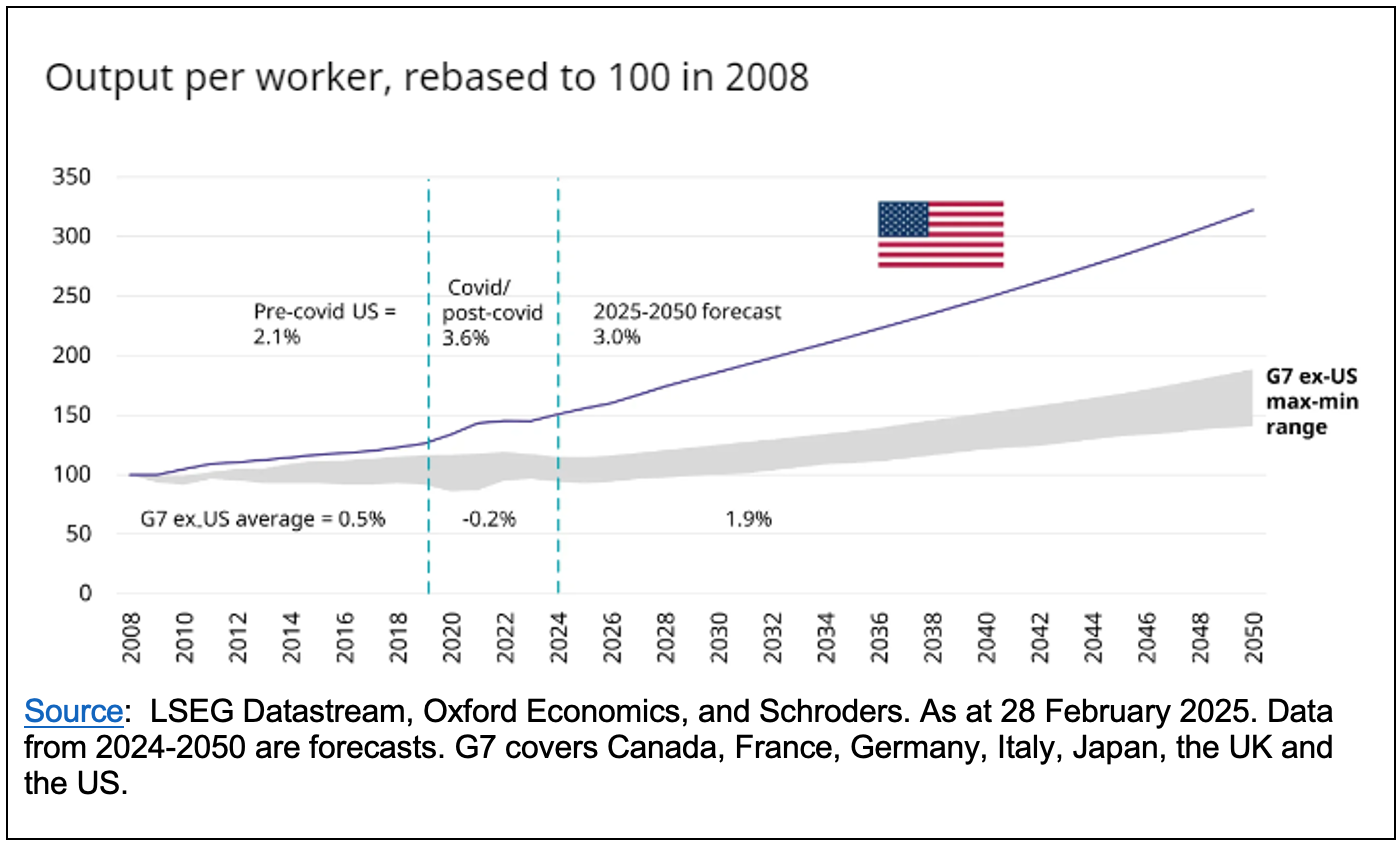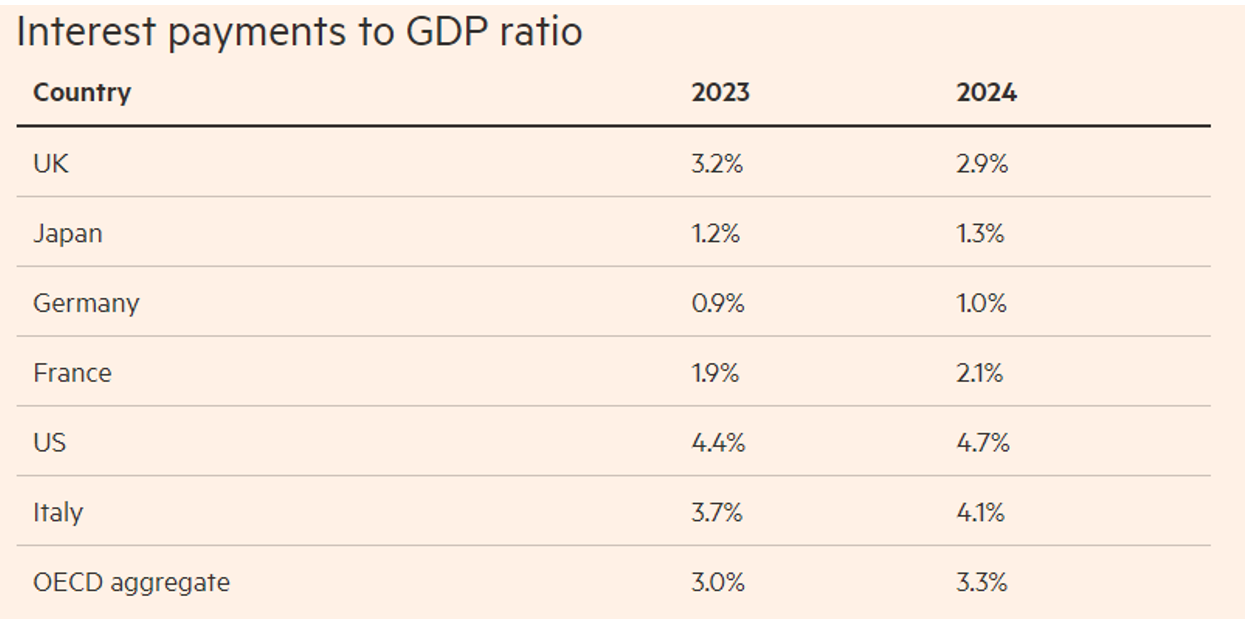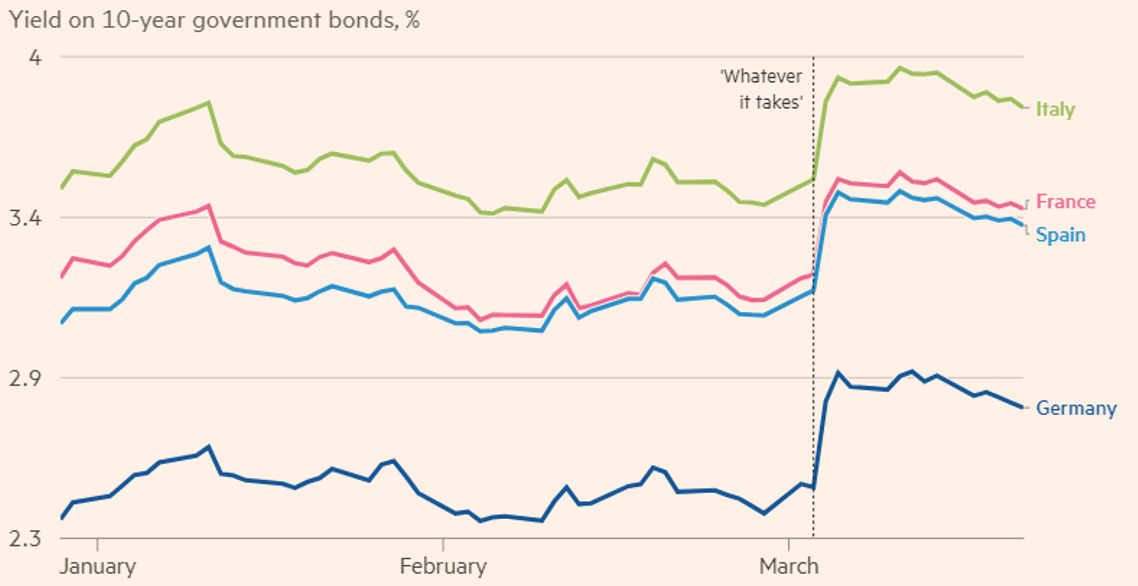Yves here. Satyajit Das looks at the conundrum of the recent peppy performance of European stock markets and its currencies versus terribly longer-term prospects. He concludes the only way to achieve not-really-terrible outcomes is to kiss and make up with Russia and China. But can European leaders eat enough crow to be able to do that?
By Satyajit Das, a former banker and author of numerous works on derivatives and several general titles: Traders, Guns & Money: Knowns and Unknowns in the Dazzling World of Derivatives (2006 and 2010), Extreme Money: The Masters of the Universe and the Cult of Risk (2011) and A Banquet of Consequence – Reloaded (2021). ). His latest book is on ecotourism – Wild Quests: Journeys into Ecotourism and the Future for Animals (2024). This is a revised and extended version of an earlier article, Dysfunction, debt, drag on efficiency, European decline, published at New Indian Express.
European Renaissance?
Since the Trump ascension, European stock markets have outpaced US stocks for the first time in a quarter of a century. Assuming that stock prices actually mean something, the implication is that an European economic renaissance is imminent. It is a mirage.
Fast money is moving in an overdue rebalancing into European, Chinese and emerging markets At peak, the US constituted over 60 percent of global equity indices well above its share of global GDP of around 26 percent (by nominal GDP) and 16 percent (adjusted for purchasing power). Concentration is exacerbated by 26 stocks accounting for half the entire value of the S&P 500 index and the domination of technology stocks. ‘FAANGs’ morphed into the ‘Magnificent 7’ and narrowed into a single stock NVIDIA, on which investors globally have unwittingly bet their life savings and retirement funds.
Other markets now simply offer better value. There is concern about uncomfortably high US valuations (close to their most expensive in the past 143 years). Assumed superior US economic growth was never much more than the result of high government spending under the 2022 Inflation Reduction Act and the CHIPS and Science Act which resulted in unsustainable budget deficits of 6 per cent and rising debt. China’s Deep Seek’s low cost AI models raised uncomfortable questions about America’s technological advantage. As US technology stock prices have fallen, Goldman Sachs lowered its S&P targets. The underperformance of the ‘Magnificent’ US mega-cap tech stocks led the investment bank to dub them the ‘Maleficent 7’.
The Bazooka
The only real economy development has been the hasty announcement of spending plans on defence and infrastructure. ‘Pathetic Europeans’ (to use the description favoured by the US Administration) have realised continued US security support is not a given. Having worked themselves into a frenzy over the invading Russian hordes without substantive evidence of the threat, Eurocrats have been forced to act or, to be more accurate, make announcements.
Facing a choice between increasing their own spending on security and paying the US protection money, they have agreed a €800 billion ($860 billion) plan to increase European defence spending. It includes a €150 billion loan scheme secured against unused funds in the European Union (EU) budget and a loosening of EU’s fiscal rules to unlock €650 billion in new spending. The basis of the calculation of the amount is not clear.
In parallel, Germany, under future Chancellor Merz who has transformed from a ‘fiscal hawk’ into a plain raptor, will exclude defence spending from the calculation of the debt brake (which limits annual deficits to 0.35 percent of GDP). As part of negotiations to gain the Green’s support for the constitutional amendment, Merz promised a €500 billion fund for infrastructure and climate transition over the next 12 years.
Markets are giddy at the prospect of European reflation but there are reasons for caution. It is unclear if governments will make use of the scheme or the full financial flexibility afforded. The proposed sum of €650 billion will be over several years and compares to member states total defence spending of €324 billion in 2024. The US spends around €780 billion annually. How the spending will be financed remains unknown with German resistance ruling out common debt at least for the moment.
To ensure self-sufficiency and independence from the ‘dastardly’ US, the EU will exclude American, British and Turkish suppliers from weapons procurement. But European defence industries remain capacity constrained and fragmented along national lines. Given that the US currently supplies between 50 and 60 percent of European weaponry, there is a high risk that the funds won’t be deployed or leak outside Europe.
As usual in Europe, there is no strategy or details. Each member wants to maximise their own benefit. The French and Germans believe that these funds will benefit their manufacturers. VW which struggles to make cars competitively may convert its plants to produce tanks- a new version of guns versus butter. There is the vexed issue of nuclear weapons which only France amongst EU members possesses. Even the perception of risk is different based on the distance from the Russian border. The European Commission will see the plan as way to increase its powers. Traditional conflicts of European integration will surface over procurement and financing.
The only point of consensus was that a big announcement that Europe will do “whatever it takes” was necessary. All else will follow.
The Sad Truth
In any case, these measures even in implemented will not change Europe’s fundamental trajectory.
European growth is lack lustre. Between 2010 and 2023, European GDP grew cumulatively by 21 percent, compared to America’s 34 percent. Current forecasts project medium term annual real growth of around 1-1.5 percent. Causes include low investment in infrastructure, new technologies and research and development and poor productivity improvements. Weak consumption and high saving rates reflect low consumer confidence.
US productivity currently outstrips the rest of the world. American demographics are more favourable with the working age population forecast to increase, in part through immigration, supporting economic growth. US businesses are more profitable and growing faster. Even with the likely reversals due to the Trump administration’s regressive trade and immigration policies, it is difficult to see Europe economically outperforming the US.

Source: LSEG Datastream, Oxford Economics, and Schroders. As at 28 February 2025. Data from 2024-2050 are forecasts. G7 covers Canada, France, Germany, Italy, Japan, the UK and the US.
Europe’s current economic model is unworkable. Post-war success was based on rebuilding shattered economies, the generous Marshall plan, low labour costs and a strong technical and manufacturing base. The common market reinforced by the single currency since 1999 facilitated trade amongst members. The expansion of the EU and the reunification of Germany created new pools of cheap labour and new markets. More recently, China provided new markets for automobiles, machinery and industrial technologies underpinning growth.
The position is now different. Dependence on exports to compensate for anaemic domestic consumption and associated mercantilist policies create problems.
Intra-European trade relies on recycling of German savings and trade surpluses to net importing Mediterranean and Eastern European nations to finance purchases of Germany’s exports. The substantial internal financial imbalances were exacerbated by the European Central Bank (ECB) bailouts of crisis-afflicted Greece, Cyprus, Italy, Portugal, Spain and Ireland in 2012. Germany is now owed over Euro 1 trillion (around 22 percent of GDP) mainly by Italy, France, Spain, Portugal and Greece.
In 2024, EU trade with the US showed a €198 billion trade surplus partially offset by a services deficit of billion.Proposed US tariffs, especially on automobiles, medicines and pharmaceuticals, will be damaging. There is significant reliance on China, which is the EU’s third largest export market and the largest source of imports. Europe now runs trade deficits with China (€305 billion in 2024). Having moved up the value chain, the Middle Kingdom is a potent competitor with significantly lower cost in semiconductors, white goods, consumer electronics and automotive. The ongoing trade conflict over electric vehicles evidences these tensions.
Several factors underlie Europe’s lack of competitiveness. Energy costs have increased by 30-40 percent with the replacement of Russian gas imports via pipelines with more expensive shipped US and Gulf LNG. It has replaced one geostrategic dependency with another.
Declines in the working age population and increasing resistance to immigration to supplement the workforce places pressure on labour markets. Non-wage items, such as social, unemployment and medical insurance, adds up to 40 percent to labour costs. Europe’s unfunded overgenerous welfare state, including relatively early retirement and generous pensions, is unsustainable and seemingly unreformable. France has struggled to make modest changes to its pension arrangements.
Despite decades of talk, integration of its capital markets remains incomplete.
Over-zealous, complex overlapping regulations are a drag on efficiency. Brussels’ intervention adheres to the principle of all extraneous bureaucracies – self perpetuation and mission creep.
Debt Debt Everywhere
The EU’s government gross debt is near 88 percent of GDP. The highest debt levels are Greece (164 percent), Italy (137 percent), France (112 percent), Belgium (108 percent), Spain (105 percent), and Portugal (101 percent). Germany’s debt to GDP is a more modest 62 percent but likely to rise under its new spending plans. In addition, like some other member states, it has substantial unfunded pension liabilities (estimated at anywhere between 31 and 58 percent of GDP). Adding the most probably unrecoverable amounts owed by other EU members, Germany’s debt position looks less comfortable. The EU’s own separate debt is expected to reach €900 billion by the end of 2026 to fund coronavirus recovery programmes and support for Ukraine. Debt services costs are steadily rising and now constitute an increasing portion of GDP and government revenues despite relatively modest Euro interest rates.

Source: Financial Times based on OECD Data.
The EU plan for increased spending resulted in a sharp rise in European interest rates. Benchmark 10-year Bund yield rose about 0.25 percent, the most in decades. Quickly rationalised by apologists as being the result of optimism about growth and not debt concerns, it will nonetheless place increasing pressure on borrowers.
The debt problems are steadily moving from the periphery (smaller states) to the EU core (Germany, France, Italy). They will become problematic, especially if markets lose confidence and interest costs rise. France’s debt costs recently exceeded that of Greece! There is no plan to restore public finances which will deteriorate if the spending proposals are implemented. A new European debt crisis is a non-trivial risk.

Source: Financial Times based on LSEG Data.
The structural flaws of the Euro remain unaddressed. The inability to devalue or set individual monetary policy limits the flexibility of members with different requirements. At the same time, there is no common fiscal policy because of German reluctance to de facto underwrite EU common debt. An incomplete union, a currency without a country and states without a sovereign currency severely restricts policy options.
Geo-strategic Paralysis
In the post World War 2 period, the EU benefitted from modest defence spending using the US umbrella enshrined in NATO to guarantee its security. After 1989 and the collapse of the Soviet Union, it gained from a large peace dividend diverting funds from defence to more productive sectors which is now being unwound.
Changed US foreign policy means that European countries will have to increase defence spending substantially and bear the bulk of the cost of support for Ukraine. The peace dividend is reversing with the onset of a second cold war. Unless the conflict is resolved, the EU’s continued support Ukraine, both in combat and reconstruction, will strain its finances and industrial capacity. An additional constraint will be the need to support large numbers of refugees from Ukraine (estimated at over 6 million at a cost of around €120 billion). Continued instability in the Middle East and Africa will result in a steady flow of displaced people into Europe further pressuring resources. Unlike America, Europe lacks the protection of a “beautiful ocean”.
Political dysfunction means that Europe is incapable of enacting the policies and reforms needed to manage these pressures. France is barely governable with drawn-out dramas over the formation of a government. The righteous deal between the Centre and the Left to deny the Far Right a greater role sets a dangerous precedent and may rebound on major parties at the next election. France President Macron, the self-proclaimed ‘Jupiter’, is now largely an impotent figurehead.
Germany’ main political parties may come to regret their cynical horse-trading to use the existing parliament to change the constitution despite its successor having been elected and due to take office in weeks. Backroom deals to freeze out the AFD, the second most popular party, risk antagonising restive voters. The refusal, subsequently overturned by courts, by members of the German Bundestag to allow elected AFD politicians to join the football side on the grounds that they did not want to “shower with Nazis” was farcical.
The European electorate has fragmented into far right, far left and centrist groupings, often of roughly equal size. Voters, many of whom share pathological dislike of governments and elite politicians and bureaucrats, have shifted support from traditional parties to more extreme populist movements. Central concerns include sovereignty, immigration and border security and disagreements on social issues around diversity and inclusion. Economic disagreements are around costs of living, housing, public finances and expansion or preservation of existing welfare benefits. Even where these populist parties are not part of governments they now dictate the political agenda. Lack of governing majorities means unwieldy and unstable coalitions, with contradictory political positions. Victor tyranny and lack of loser’s consent leads to continuous trench warfare preventing action.
New entrants, primarily small former Eastern European nations, have exacerbated the EU’s problems. Having only joined to secure Brussel’s largesse, their frequently narrow concerns, parochial worldview, paranoias and different relationship to great powers like the US, China and Russia prevent agreement on a considered continental position. At a transnational level, the EU, where decisions require unanimity or consensus, is paralysed by two divides: North-South (a fiscally conservation Northern Europe against a spendthrift Latin group) and East-West (a liberal West matched by a socially conservative East). This means backroom deals, over simplification of complex issues, and inchoate decisions which are presented to an unconvinced public with appropriate platitudes.
Three Chances Saloon
Europe’s only realistic choice involves three steps.
The first is a comprehensive security agreement with Russia. As Prince Otto von Bismarck advised: “The secret of politics? Make a good treaty with Russia.”
European equivocation between prostrate supplication before or defiance of the current US administration suggests that its weak leaders are unsure that Europe can defend itself. In practice, it probably does not have the necessary military capability without America’s uncertain and increasingly costly nuclear shield.
Any agreement will entail withdrawing military assets, most of which is American in any case, from Eastern Europe providing a buffer zone. This was President George Bush and Secretary of State James Baker’s commitment to Mikhail Gorbachev which the West never adhered to.
Europe’s support for Ukraine will have to modulated around practical battlefield verities. It will entail loss of territory and other concessions. President Trump is right in that Ukraine’s position is weak. Claptrap about the rule of laws, which all great powers evoke or ignore according to realpolitik, will not prevent partition. The choice will gradually become one between complete destruction or survival as a rump state.
If reached, the agreement would restore Russian gas supplies and lower European energy costs. It would reduce the planned build-up of defence capabilities and the cost of sustaining Ukraine and war refugees freeing up funding for other purposes
The second requires reaching an equitable trade agreement with China allowing European firms access and controlling unfair dumping of cheap Chinese goods. The large and growing market in China and its appetite for technology and investment presents significant opportunities.
Building strong relationships with Russia and China may help Europe navigate a complex geopolitical landscape and counter potential US trade and geo-political pressure. They may actually prove more reliable long-term future partners than an increasingly isolationist and volatile US who treats allies and agreements with contempt. Europe needs to prioritise its interests over ideological and sentimental concerns.
The third is to direct spending to productive areas to rebuild now-aged infrastructure, accelerate digitalisation, move beyond the middle-technology trap and rethink its dirigiste state. Mario Draghi’s voluminous report on Europe’s lack of competitiveness provides a starting point. There is an unprecedented opportunity to attract talent that would have once drifted to the US to kickstart the process.
The spatially challenged German Foreign Minister Annalena Baerbock thinks that Russian President should execute a 360 degree turn in policy. Europe needs to complete just half such as manoeuvre. But change is unlikely with Europe gormless leaders content with complacent mediocrity and the lack of clear direction. Deep divisions within the EU mean that agreement on the necessary policies is doubtful.
Without change, Europe risks irrelevance. It is already politically extraneous. America’s contemptuous treatment, bypassing its repeatedly on foreign policy on matters material to its future. highlights its marginalisation. No number of meetings, summits and declarations will change that. Its industrial prowess is waning. It is sustained by accumulated but shrinking wealth and legacies. Great powers like China and Russia and rising emerging markets increasingly view it as a curiosity – someone you trade with, a tourist destination filled with the relics of a once vibrant civilisation which you holiday in. Without a clear strategy, Europe risks steady decline punctuated by successive crises.
Recent events do not presage an European revival. It is a mirage which keeps moving away from you as you approach.
© 2025 Satyajit Das All Rights Reserved
This piece is a revised and extended version of an earlier piece Dysfunction, debt, drag on efficiency, European decline published at New Indian Express.


